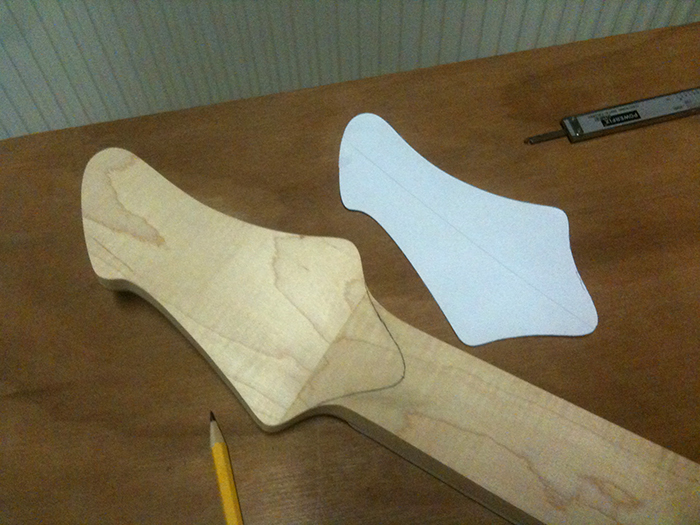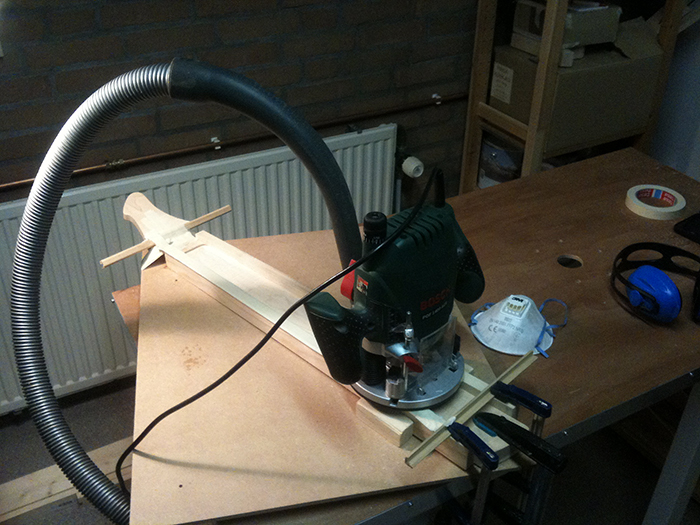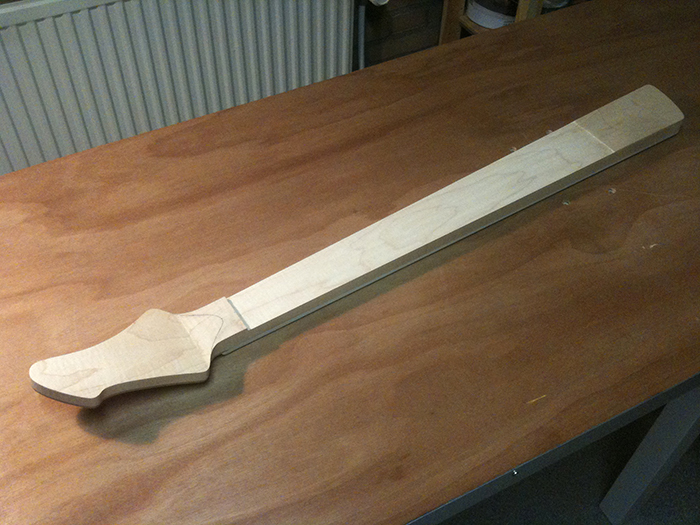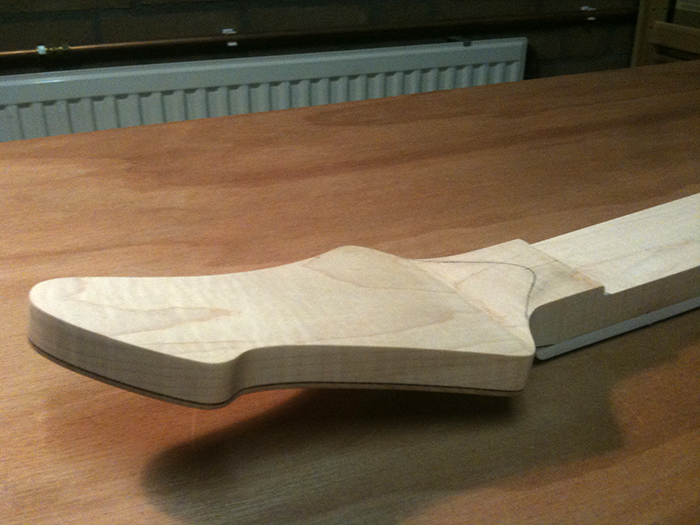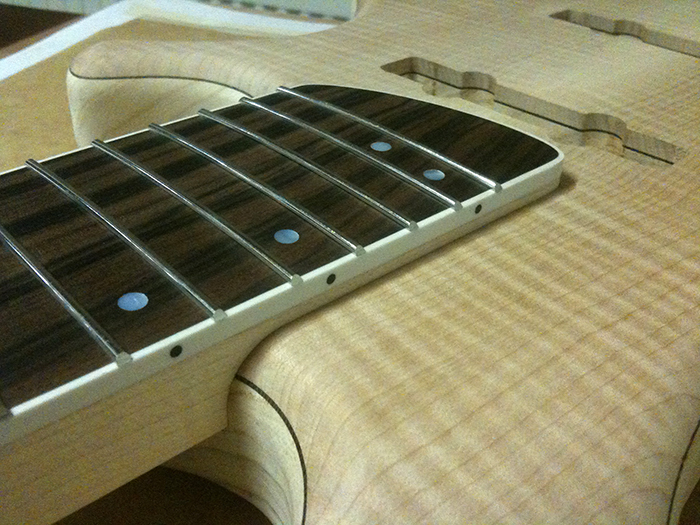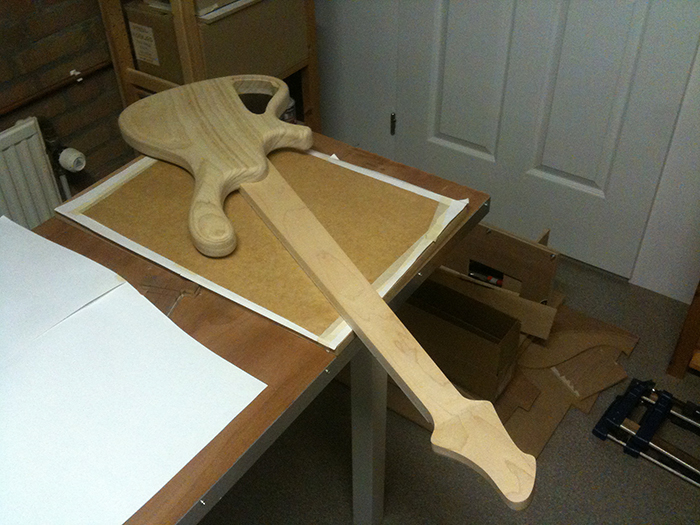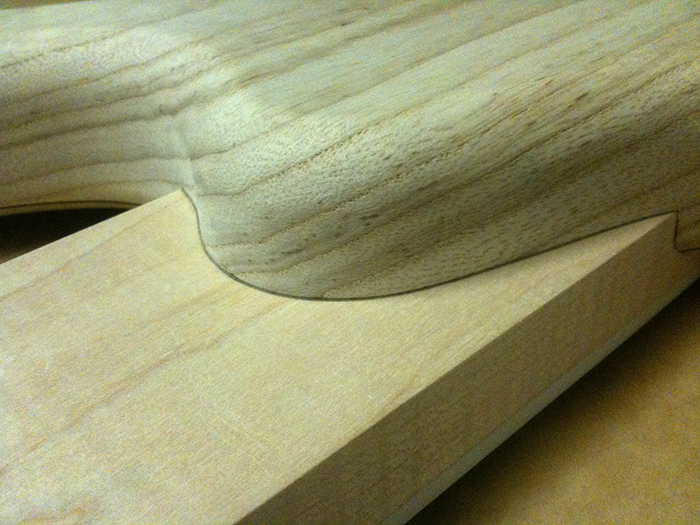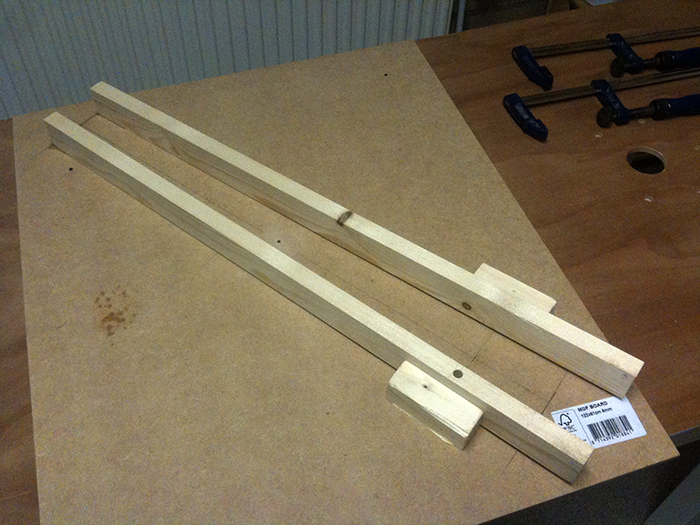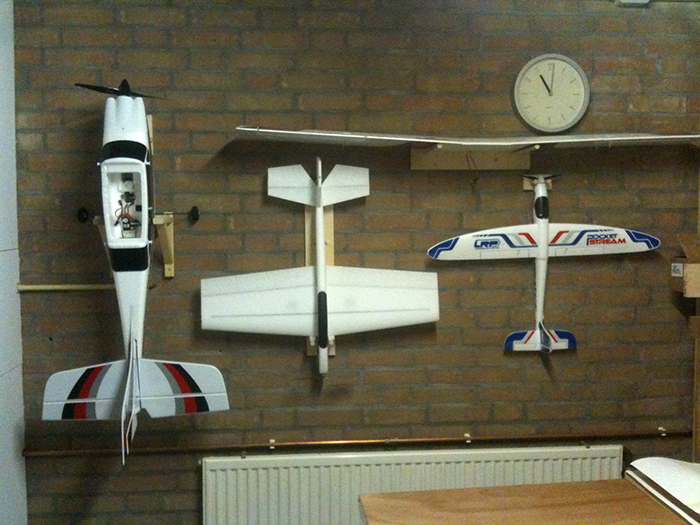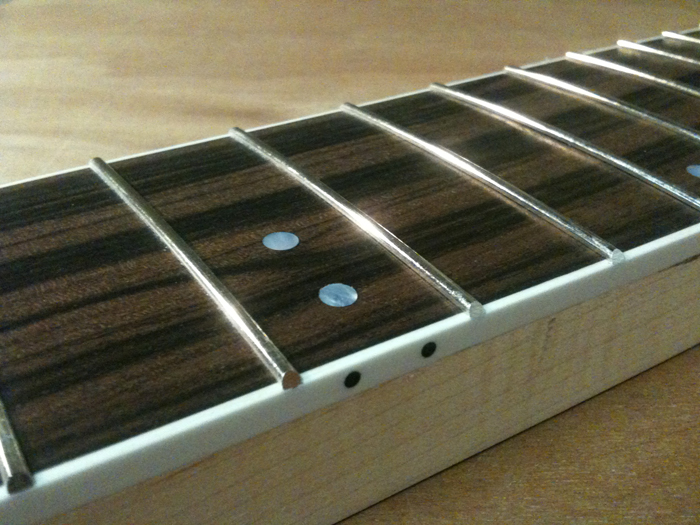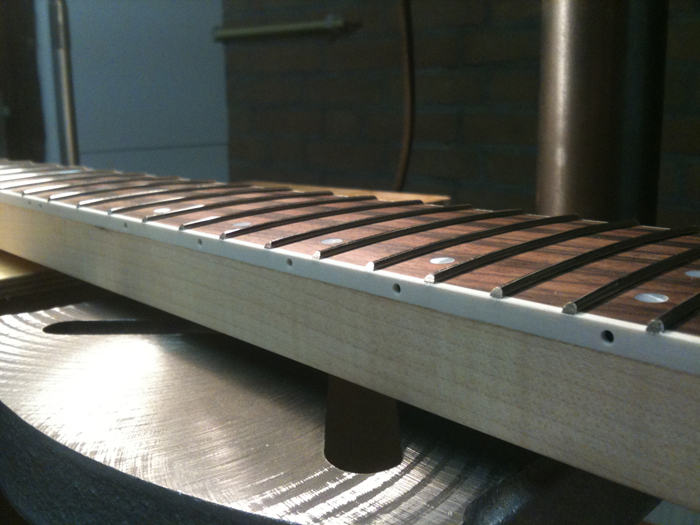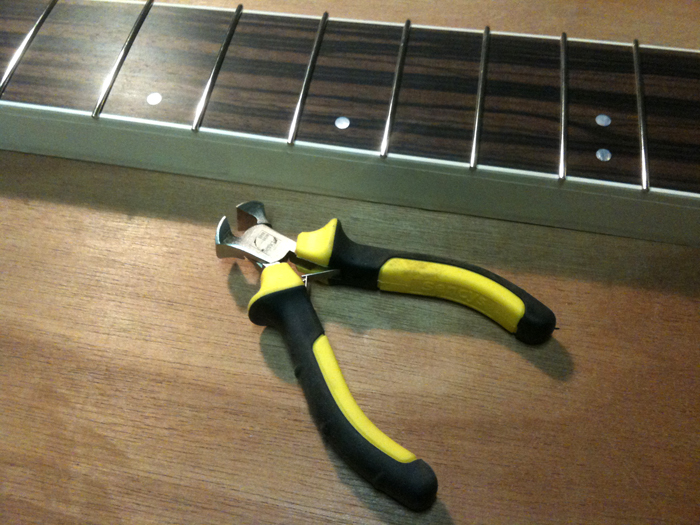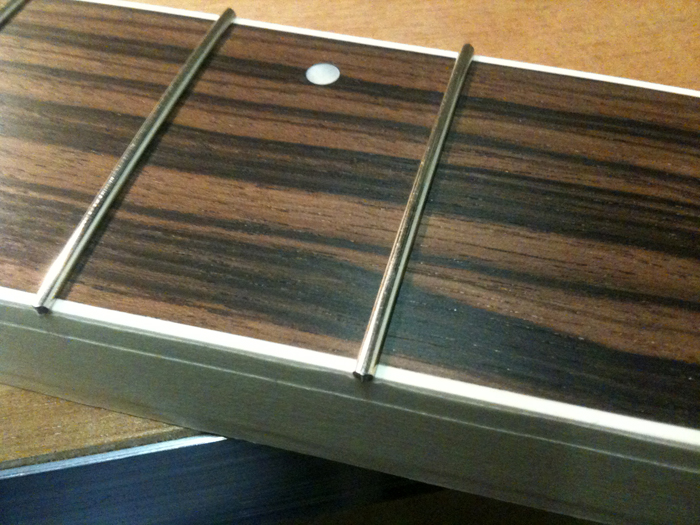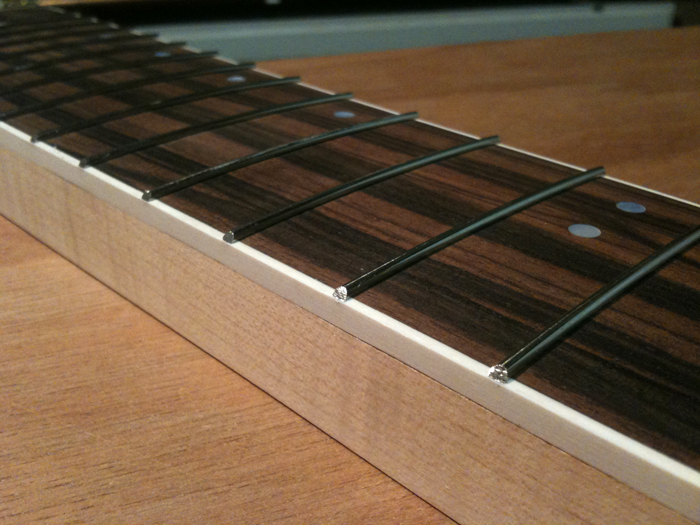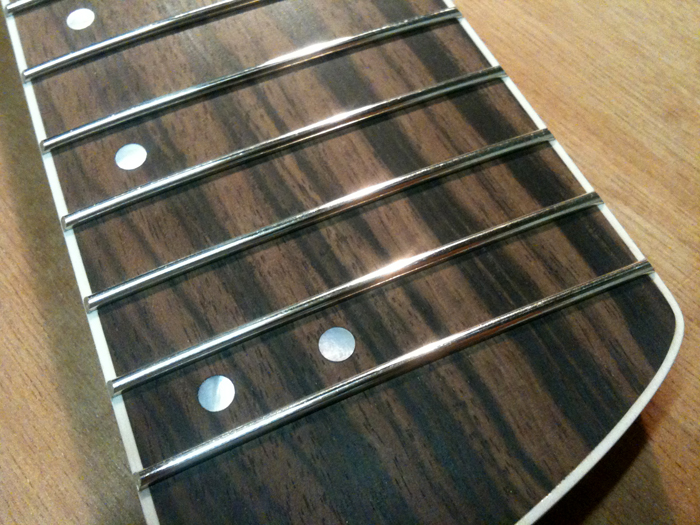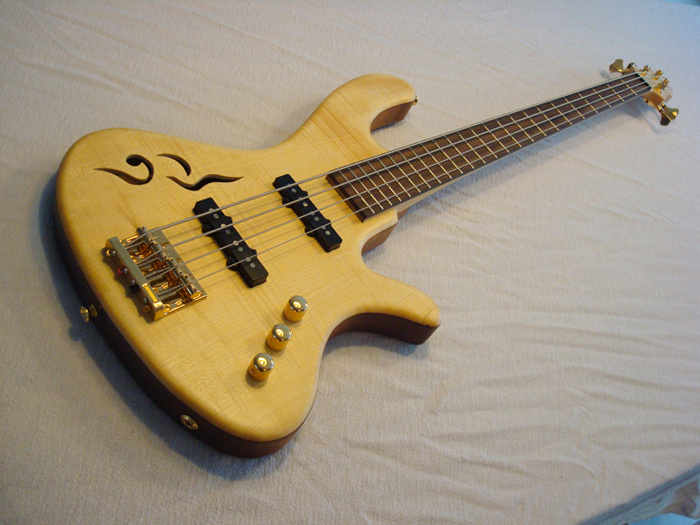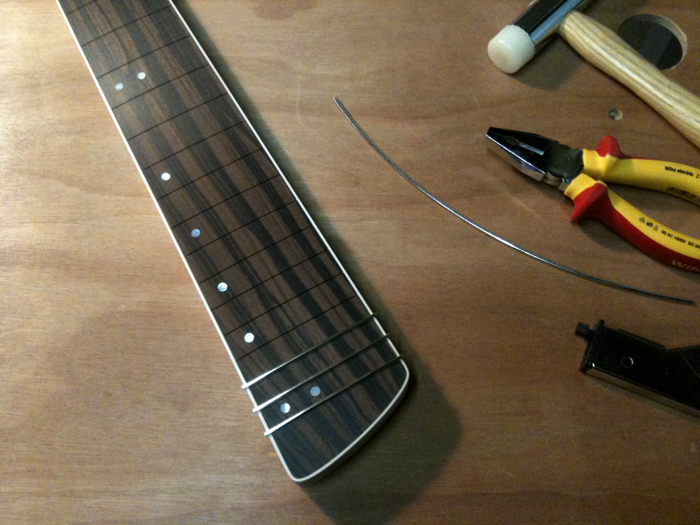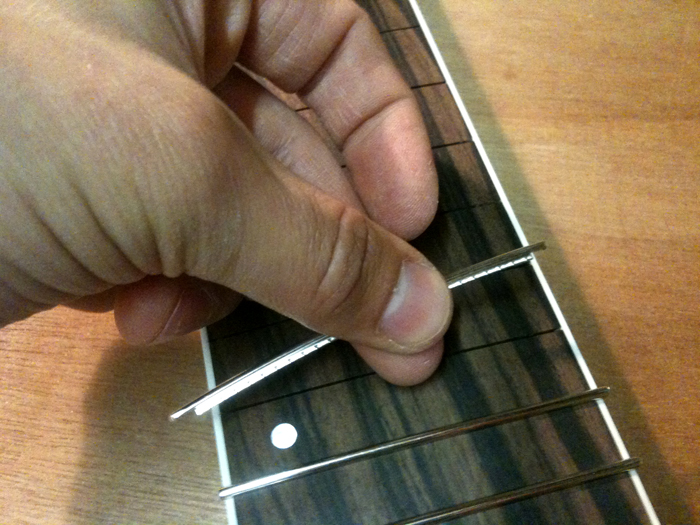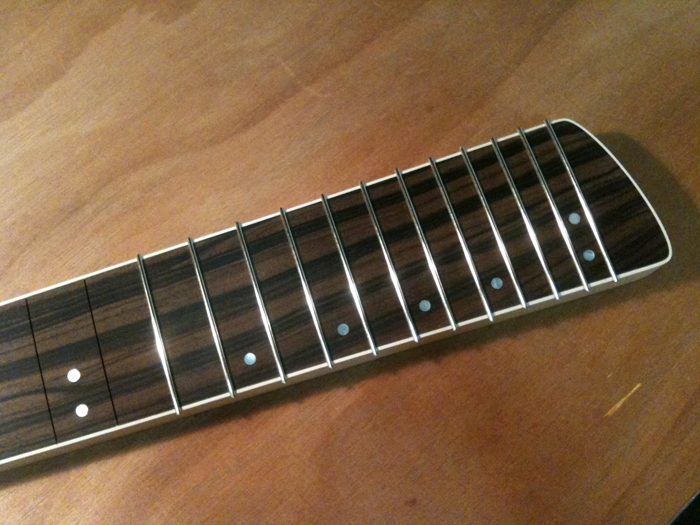Tonight I took the plunge! The last routing job.. luckily it went just great. I first made a template of the backside of the headstock to determine the shape of the volute and drew it onto the neck:
Followed by a line that indicates the end of the routed part of the neck (the volute itself will be done completely by hand, of course):
Clamped the neck into the jig I made, checked everything about three times and started routing. I plunged it only about half a mm a time, so the play would be minimal (opposed to routing rather deep at once, stressing the bit a lot more and thus resulting in a less smooth routed plane). Here I am about halfway:
And we’re ready! I reached my desired thickness of 21.5 mm @ 1st fret rather well, just a few tenth of a mm above that, but I’ll probably sand that off in the process anyway. I’m very pleased it went this smooth! It’s the last job with the router, and a relief I didn’t had any accidents.. and my math was good too: no sign of the truss rod
And a close up of the headstock:
And one more from the side:
Now the fun part can start! See you next time,

